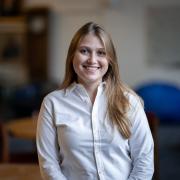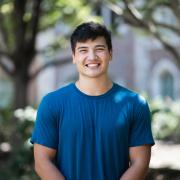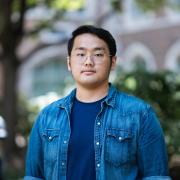Graduate Student Seminars with Ali Arra, Christopher Broyles, and Reginald Gong
A defining feature of the eukaryotic cell is its compartmentalization into organelles. While individual organelles have important functions on their own, they also make up a dynamic network whose interactions are responsible for vital cellular processes. A fundamental question in cellular biophysics is the degree to which the function of the cell is fragile or robust to perturbations to the organelle network. Here we aim to address the systems-level role organelle interactions play in regulating organelle composition and metabolic flows in the model system Saccharomyces cerevisiae. To dissect the organelle network, we have genetically broken interorganelle links formed by protein bridges called organelle contact sites. To assess the effects on organelle properties, we visualize a strain of budding yeast that expresses fluorescent labels for six organelles with hyperspectral confocal microscopy. This allows for simultaneous measurement of organelle size, number, and morphology at single cell resolution. Our data suggests that while metabolic hubs such as the ER, vacuoles, and peroxisomes are robust to network perturbations, mitochondria are a fragile node, with cells exhibiting divergent mitochondrial morphologies upon disruption of even non-mitochondrial network links.
Christopher Broyle will be presenting "Structural Distortions in Kagome Superconductor CsV3Sb5 Investigated with Quantum Oscillations"The coexistence of superconductivity with an additional order parameter has intrigued our scientific community, showing much interest in the family of Kagome Superconductors AV3Sb5 (A = K, Cs, Rb). In this material family, the role of charge density wave (CDW) order has shown both interplay and competition with superconductivity. Thus, understanding the CDW phase will provide insight into the superconducting pairing mechanism. In this study, we utilize quantum oscillations to map the fermi surface of CsV3Sb5 through the tunnel diode oscillator measurements [1]. While previous studies show the Star of David (SD) and Inverted Star of David (ISD) distortions, our results provide new orbits which cannot be captured by either distortion [1]. This suggests a dramatic renormalization of the Fermi surface due to a complex structural distortion involving interlayer ordering.
[1] C. Broyles, D. Graff, et al. "Effect of the Interlayer Ordering on the Fermi Surface of Kagome Superconductor CsV3Sb5 Revealed by Quantum Oscillations". Phys. Rev. Lett. 129, 157001 (2022)
Reginald Gong will be presenting "Coherent Dynamics of Strongly Interacting Electronic Spin Defects in Hexagonal Boron Nitride"Optically active spin defects in van der Waals materials are promising platforms for modern quantum technologies. Here we investigate the coherent dynamics of strongly interacting ensembles of negatively charged boron-vacancy (VB-) centers in hexagonal boron nitride (hBN) with varying defect density. By employing advanced dynamical decoupling sequences to selectively isolate different dephasing sources, we observe more than 5-fold improvement in the measured coherence times across all hBN samples. Crucially, we identify that the many-body interaction within the VB- ensemble plays a substantial role in the coherent dynamics, which is then used to directly estimate the concentration of VB-. We find that at high ion implantation dosage, only a small portion of the created boron vacancy defects are in the desired negatively charged state. Finally, we investigate the spin response of VB- to the local charged defects induced electric field signals and estimate its ground state transverse electric field susceptibility. Our results provide new insights on the spin and charge properties of VB-, which are important for future use of defects in hBN as quantum sensors and simulators.



